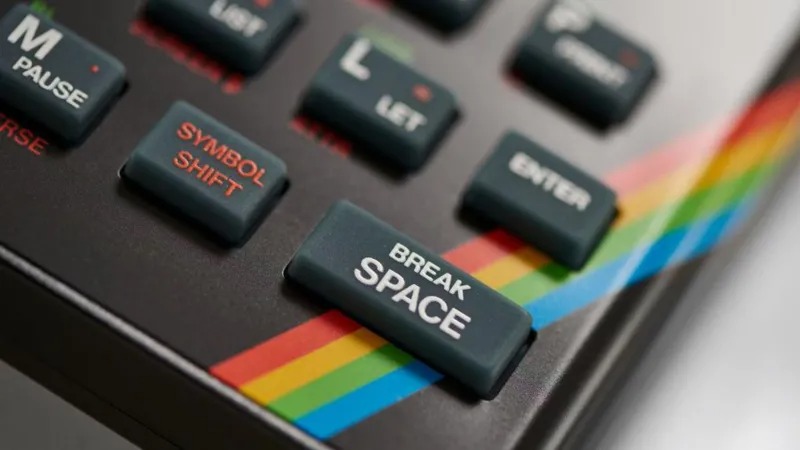The ZX Spectrum holds a special place in the history of technology, embodying the transformative energy of the 1980s. More than just a piece of hardware, it represented a cultural shift, sparking creativity, curiosity, and a sense of communal excitement that resonated across households and classrooms. For many, the Spectrum wasn’t merely a computer; it was a symbol of possibility and a gateway to the future. The machine carved out a unique legacy, blending affordability, innovation, and accessibility to transform not just how people engaged with technology but how they envisioned it.

A Revolutionary Beginning
When the ZX Spectrum launched in April 1982, its arrival marked a watershed moment in home computing. Designed by British tech pioneer Sir Clive Sinclair, the device was conceived as an affordable personal computer that could bring computing into the average household. Its compact design and colorful aesthetic appealed to a wide audience, helping it stand out in a burgeoning but predominantly niche market. The Spectrum’s pricing was revolutionary, as it lowered the entry barrier for countless families who had never considered owning a computer before.
The technical specifications of the ZX Spectrum were modest by today’s standards but groundbreaking at the time. Equipped with a Zilog Z80 processor and available in 16KB and 48KB RAM variants, it delivered enough performance to handle an impressive array of applications. Its rubber keyboard, compact size, and capability to connect to standard televisions made it user-friendly, even for individuals with no prior experience with computers.
A Gaming Revolution
One of the ZX Spectrum’s most enduring contributions was its role in shaping the gaming industry. For many users, it was their first exposure to video games, and the Spectrum quickly became synonymous with gaming in the UK. Its affordability opened the door for developers and hobbyists to experiment with creating software, which led to an explosion of titles. The machine’s relatively open platform encouraged an ecosystem where independent developers thrived, producing games that remain iconic to this day.
Games such as Jet Set Willy, Manic Miner, and Elite pushed the boundaries of what the hardware could achieve. These titles weren’t just entertainment—they were cultural phenomena. Players marveled at the innovative gameplay and vibrant graphics, often spending hours exploring pixelated worlds. For a generation, these games were more than a pastime; they became shared experiences, discussed in classrooms and playgrounds, fostering a sense of community among enthusiasts.
The ZX Spectrum as a Learning Tool
Beyond its entertainment value, the ZX Spectrum was a powerful educational tool. At a time when computing was a nascent field, the Spectrum introduced many young people to programming. The inclusion of Sinclair BASIC, a programming language tailored for beginners, empowered users to create their own software. This feature not only demystified the inner workings of computers but also laid the foundation for a new generation of developers and engineers.
In schools, the Spectrum was often used to teach programming, offering students hands-on experience that textbooks could never replicate. Many professionals in today’s tech industry credit the ZX Spectrum as their starting point, highlighting its lasting impact on careers and industries.
Cultural Impact
The ZX Spectrum transcended its technical capabilities, becoming a cultural icon of the 1980s. Its influence extended into music, television, and even art, reflecting the zeitgeist of a decade defined by experimentation and innovation. The machine’s colorful branding and futuristic aura made it a staple of pop culture, appearing in magazines, advertisements, and TV programs.
For many, the Spectrum was more than a device; it was a symbol of empowerment. Owning one provided a sense of connection to a rapidly changing world, where technology was no longer the preserve of corporations or governments. Instead, it became a personal and accessible tool, fostering creativity and exploration.
The ZX Spectrum’s Legacy
Even decades after its release, the ZX Spectrum’s impact remains profound. Its success inspired the creation of other affordable home computers, such as the Commodore 64 and the BBC Micro. While these machines also made significant contributions to computing, the Spectrum’s combination of accessibility and cultural resonance set it apart.
The nostalgia surrounding the ZX Spectrum has led to a vibrant retro-computing community. Enthusiasts continue to preserve its legacy through emulation, online archives, and even modern reinterpretations of classic games. The enduring love for the Spectrum is a testament to its unique role in the evolution of technology and culture.
The Enduring Spirit of the Spectrum
The ZX Spectrum’s story is one of democratization and inspiration. It brought computing to the masses, fostered a generation of creative thinkers, and left an indelible mark on the gaming industry. Its influence extended far beyond its hardware, shaping how people understood and interacted with technology.
For those who grew up with the ZX Spectrum, it was more than a computer; it was a companion, a teacher, and a window into new possibilities. Even as technology continues to evolve at an unprecedented pace, the Spectrum’s legacy endures as a reminder of the excitement and potential that defined the 1980s.
Through its simplicity, affordability, and innovation, the ZX Spectrum didn’t just introduce people to computing—it ignited a movement that transformed lives and inspired generations.










Add Comment